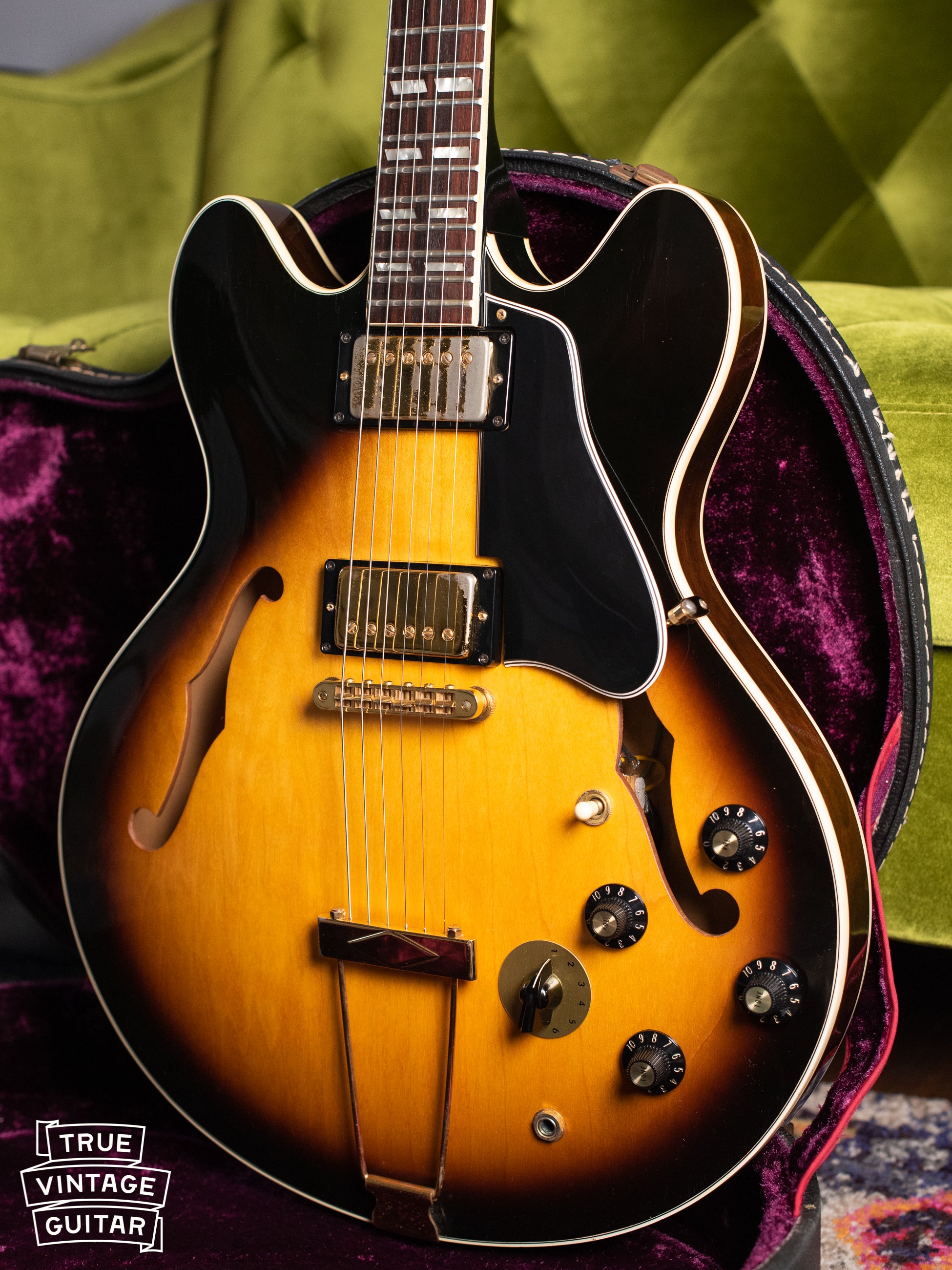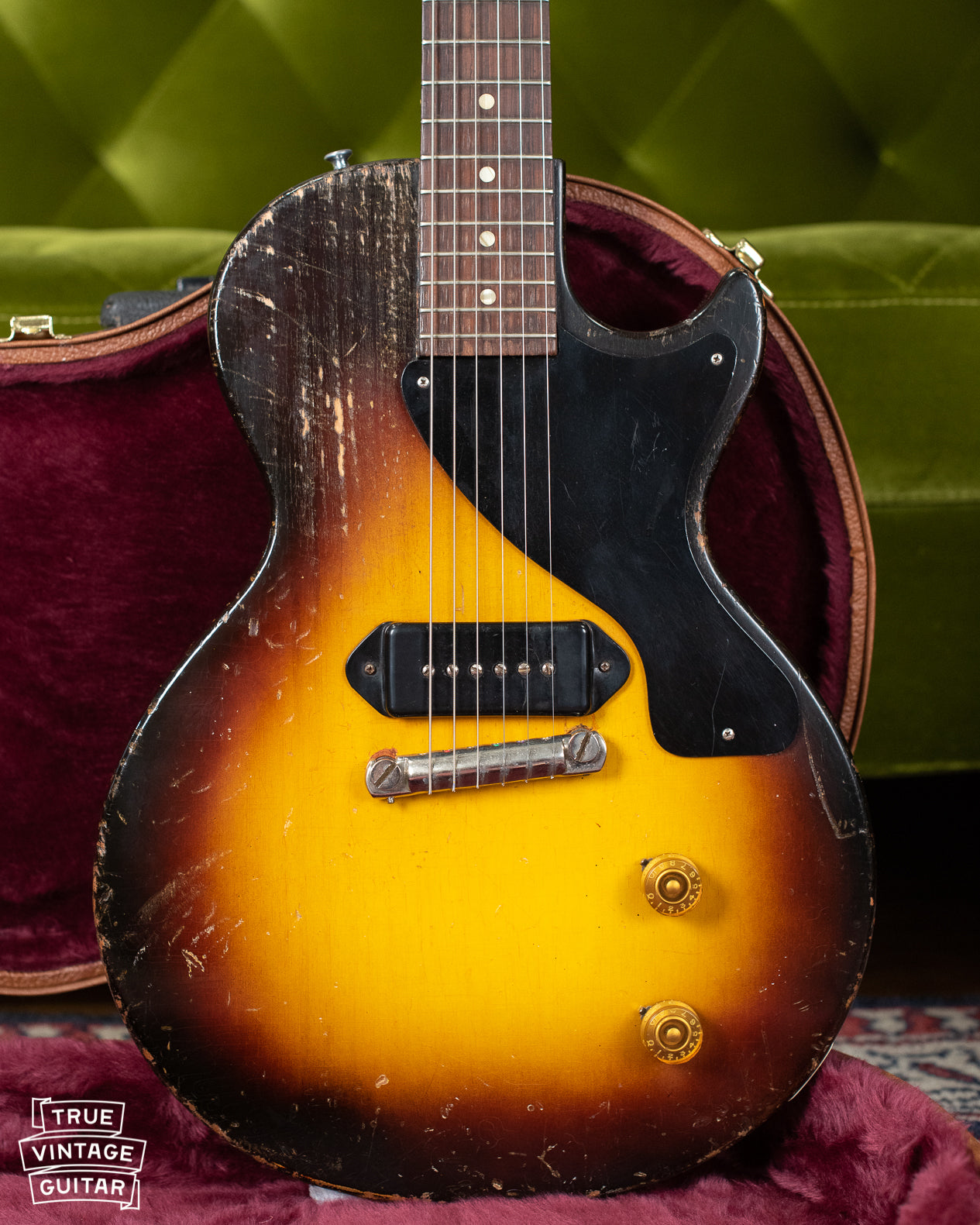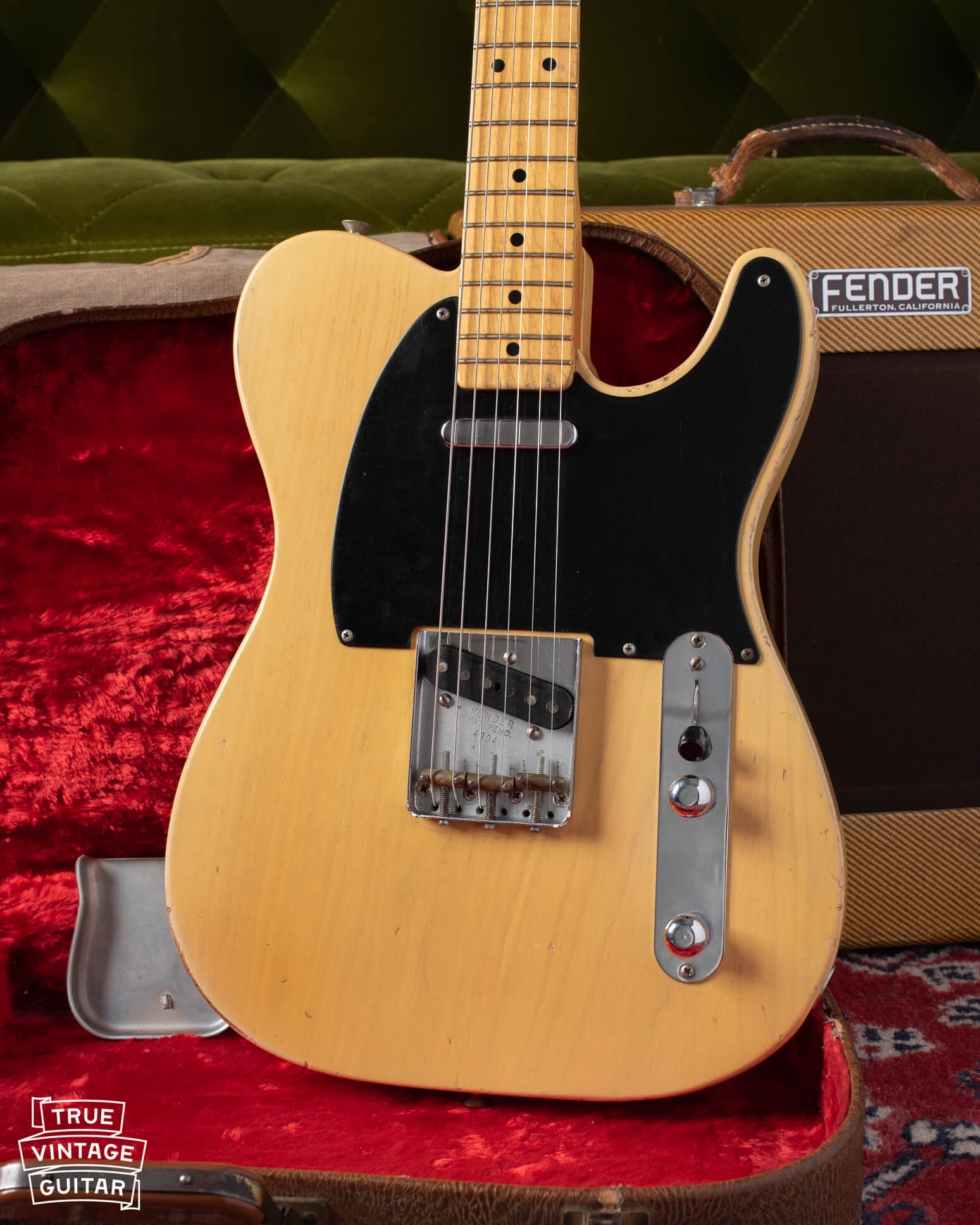Here's the next YouTube video I've been working on: I’ve got two vintage Gibson ES-345 guitars that are only 4 years apart but made in 2 different Gibson factories. I’m going to go through the story of each guitar, compare the list of similarities and differences, and play them back to back to see which one you prefer. Also, I just booked a flight for a guitar safari across the United States for two weeks from posting this video that I’d love for you to see. I’ll bring the cameras along for the entire story of sourcing a golden era Gibson Les Paul (spoiler alert: It’s gold). Have you subscribed to the channel yet? Here it is: https://youtu.be/YRvT8Z_ltgk
Do you want to sell a vintage Gibson ES-345 guitar? I'm always looking to buy vintage Gibson guitars but I especially love the ES-345 model. You can contact me here to sell a vintage Gibson guitar.
ES-345 history: The ES-345 came out in 1959 and was the third of the Thinline Electric Spanish 3x5 line. It was Gibson’s first model to feature the Stereo output and Varitone switch and the ES-355T began being produced in large numbers with SV shortly after the 345. The Stereo output is a bit of an odd setup: the neck pickup output is one side of stereo and the bridge is the opposite. They were sold with a grey Switchcraft cable with a ¼” TRS plug on one end and two standard mono ¼” output plugs on the other end just like this cable that goes with the ‘76. It’s a very cool set up if you have two seperate amps, or a Gibson stereo amplifier like the GA-79, but it doesn’t work as well to plug in the same amp since the outputs are out of phase from each other. The middle position causes slight cancellation giving a quacky sound. Gibson achieved this by installing the magnets in the pickups meant for stereo guitars with opposite polarity. I’m still not exactly why they did it. Maybe to encourage you to buy a Gibson stereo amp?
1972 Gibson ES-345td: in ‘72, ES guitars have the smaller nut width (1 9/16”) Mahogany neck with volute, patent sticker humbucking pickups, trapeze tailpiece, and were made in the Kalamazoo, MI factory. I bought this ‘72 from the wife of the original owner, named Laura. She said her husband played country music and liked to make things. He made a custom abalone shell truss rod cover with actual turquoise stone inlay with her name on it. The sale of this guitar helped replace the roof on her house.

1976 Gibson ES-345: Gibson opened a new plant in Nashville, TN in 1975. This ‘76 ES-345 was made in that factory and features a Maple neck instead of Mahogany. The change was likely made to strengthen the neck and headstock area that’s prone to breaking. It also features patent number (etched) humbucking pickups instead of the patent number sticker pickups of the 1960s and early 1970s. I purchased this guitar from the original owner who told me he bought it new in ‘76. He played it sparingly but never became the guitar player he wanted to be. He was downsizing and this was part of that.

I’m playing both of these guitars through my 1971 Fender Princeton Reverb with the help of a secret weapon: The BMF Effects ES Box. It’s a stereo input buffer with mono output so I can play it through my pedal board. I’m not using any other effects here except for the fuzz pedal. This is a very cool pedal but it’s missing one thing: It doesn’t invert the phase of one of the channels in the middle position so they’re out of phase in the middle. It’s a small gripe but I thought it was a missed opportunity.
Both of these guitars are available at my website at the time of this video and you can check them out at the links below. Consider liking this video? Drop me some feedback in the comments section. Follow on Instagram @truevintageguitar for live guitar safaris. What did you think of this blog post? Drop me a comment and let me know.




Comments
72 has clarity and warmth; 76 is muddier and thinner. Out of phase is less useful as is variatone and stereo output. Just get a 335; it’s more useful
Nice review article to get information on these two famous guitars. I am a guitar learner and for practice I am using a gibson guitar. I have good knowledge on guitar anatomy and so far I have repaired abr-1 bridge, saddle screws and nashville bridge unit. I am interested in learning the guitar recording process simultaneously and for that this blog is a good one to start.